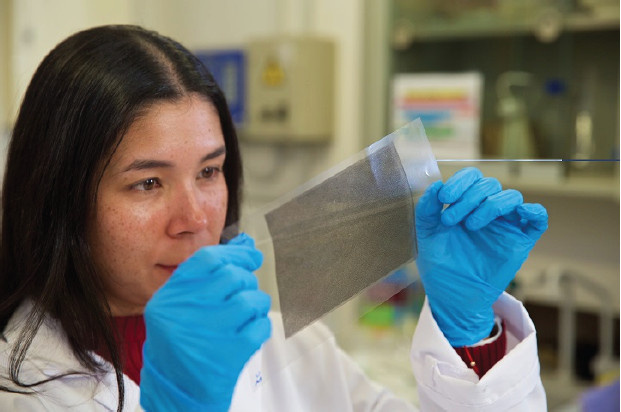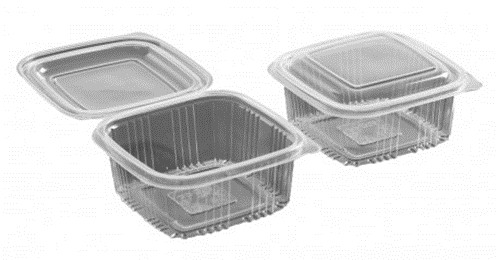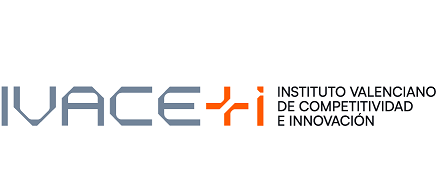Never miss an update from Universidad de Alicante
Create your free account to connect with Universidad de Alicante and thousands of other innovative organizations and professionals worldwide
The Carbonaceous Materials and Environment research group at the University of Alicante has developed an innovative active packaging that makes use of waste from the food industry. These containers are made from activated carbon obtained from waste and have an excellent capacity to absorb ethylene. Therefore, it is an ideal solution to delay the ripening of food and takes advantage of part of the waste that is generated.
TECHNICAL DESCRIPTION
In recent years, the research group has generated advanced knowledge in the use of activated carbons for use in food packaging.
In particular, work has been done on the generation of carbons that are incorporated into the packaging and that have high ethylene absorption performance. The absorption of this compound delays the ripening process of food.
To generate these charcoals, the group has worked with the waste generated in the food production process. This biomass waste is transformed into activated carbons through a procedure designed by the researchers.
This process incorporates a series of improvements with respect to the techniques used so far since it allows a more efficient synthesis which results in lower costs, higher yield, shorter processing time and a lower amount of activating agent. The material obtained is more stable, harmless and integrated into the packaging itself.
In this way, food processing waste can be reused to make the containers in which the same processed food will be stored, providing them with a greater conservation capacity.
All this achieves a high degree of reuse of waste, giving it a new added value and generating a circular economy solution.

Fig 1. Activated carbon generated from agri-food waste
TECHNOLOGY ADVANTAGES AND INNOVATIVE ASPECTS
MAIN ADVANTAGES OF THE TECHNOLOGY
This technology has multiple advantages:
• Possibility of reusing waste that has no value and that generates an economic and environmental cost.
• The active packaging can absorb the ethylene gas generated by food and which causes the acceleration of the degradation process.
• Increases the shelf life of food.
• Contributes to the overall reduction of food waste.
• The new process has a series of technical advantages over its predecessors, such as:
o More efficient method in which moisture content is not a drawback.
o Higher yields
o Shorter processing times
o Lower temperatures required for processing.
o More stable material
o Lower packaging saturation speed
o System integrated into the packaging itself
o Use of more sustainable chemical reagents.
o Possibility of being reused in successive processes.
o Lower replacement frequency due to high porosity
• Around 40% of the waste can be transformed into activated carbon and incorporated into the active packaging
INNOVATIVE ASPECTS
The most innovative aspect of this technology is the possibility of taking advantage of a waste that generates an economic and environmental cost, and turning it into an element of high added value that can be used by the food industry itself to produce food packaging. In addition, this packaging allows the shelf life of food to be increased, thus providing a new competitive element to the company and its products.
All this is achieved with a more efficient process that is easier to implement in the company's own facility.

Fig 2. Packaging generated with new technology
CURRENT STATE OF DEVELOPMENT
The technology is currently in the validation phase and tests are being carried out with different types of waste and different agri-food industries to assess the impact on the shelf life of food.
This technology arises from a research project called ENCARBIO financed by the Valencian Innovation Agency (AVI) within the program for the valorization and transfer of R&D&I results.
COLLABORATION SOUGHT
Companies interested in acquiring this technology for commercial exploitation are sought through:
• Knowledge licensing agreements.
• R+D (technical cooperation) project agreement to undertake technology-related projects.
TECHNICAL IMAGES (1)

Ahead of the current Coronavirus outbreak, Innoget is fully committed to contributing to mobilizing scientific and expert communities to find a real solution to the Covid-19 pandemic. Therefore, we're supporting worldwide calls and programs that could help in any aspects of the coronavirus crisis.
Is your organization promoting or looking for innovation or research initiatives to mitigate the Covid-19 outbreak? Email us at covid19@innoget.com to list them.
Channeled through Innoget's online open innovation network, initiatives in the health, virology, medicine, or novel technologies applied to human health, among others, are listed and disseminated to Innoget members -ranging from hospitals, research institutes, scientists, businesses, and public administrations- and innovation partners worldwide.
Create your free account to connect with Universidad de Alicante and thousands of other innovative organizations and professionals worldwide
Send a request for information
to Universidad de Alicante
Technology Offers on Innoget are directly posted
and managed by its members as well as evaluation of requests for information. Innoget is the trusted open innovation and science network aimed at directly connect industry needs with professionals online.
Need help requesting additional information or have questions regarding this Technology Offer?
Contact Innoget support